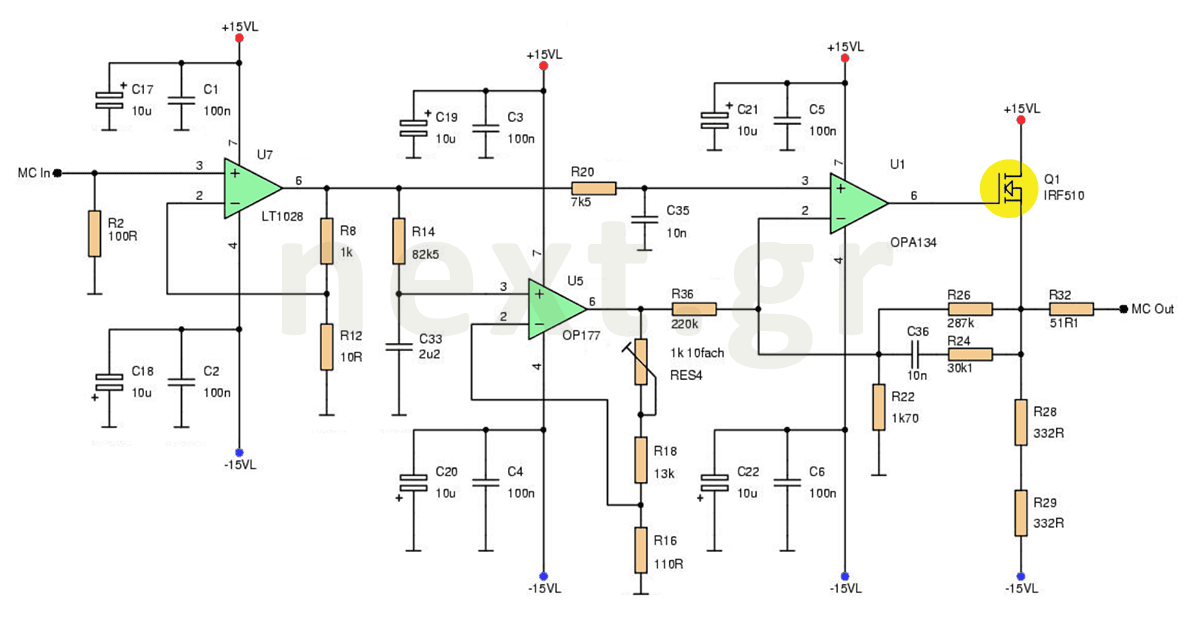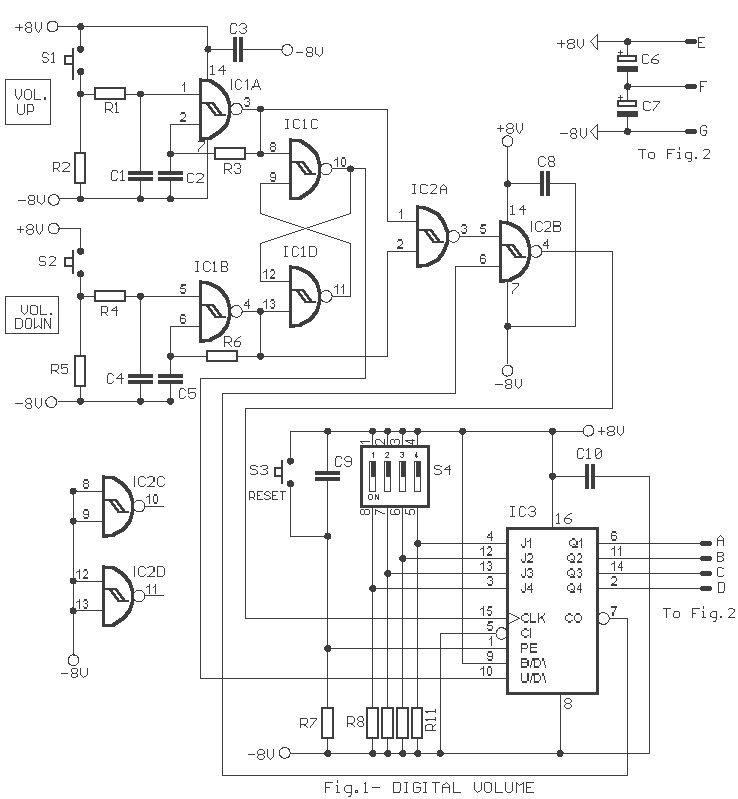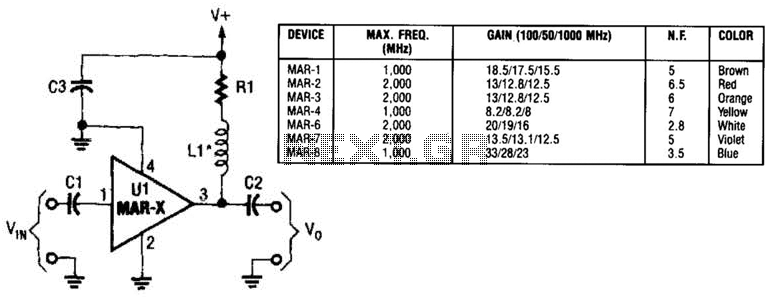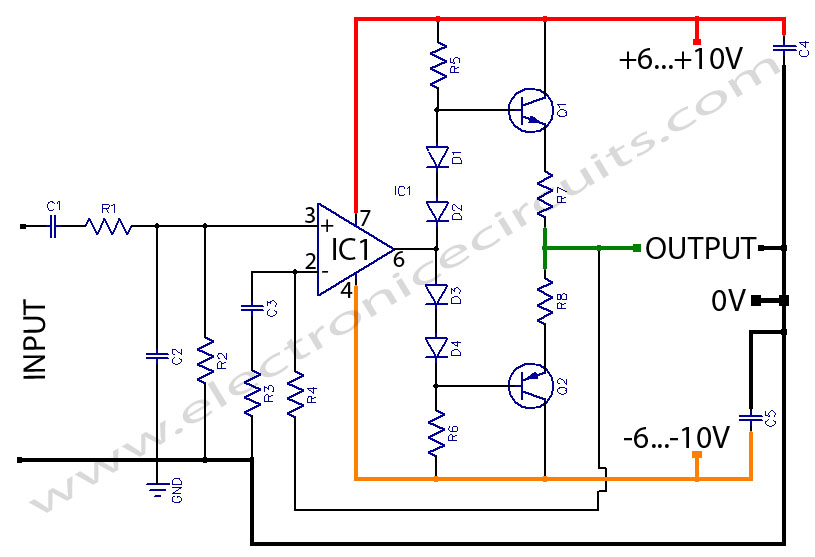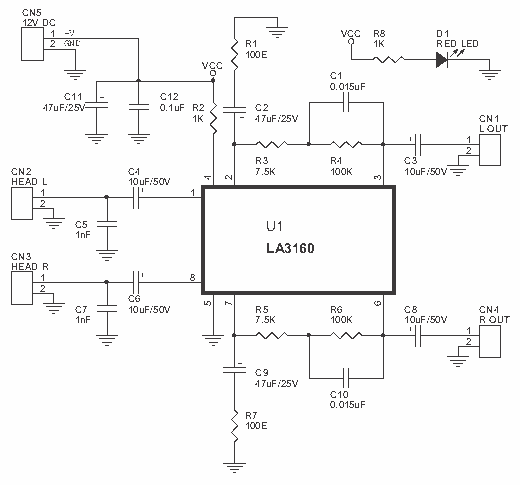
Phono Preamplifier
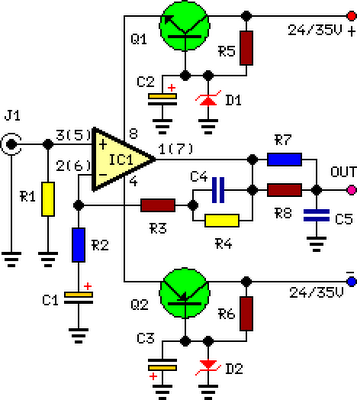
In recent years, following the introduction of CDs, vinyl recordings have nearly disappeared. Nevertheless, a phono preamplifier remains useful for listening to old vinyl discs from a well-preserved collection. This simple yet efficient circuit designed for inexpensive moving-magnet cartridges can be used in conjunction with audio power amplifiers, featuring low noise, a good RIAA frequency response curve, low distortion, and effective high-frequency transient behavior due to passive equalization in the 1 to 20 kHz range.
The phono preamplifier circuit is essential for amplifying the low-level signals produced by moving-magnet cartridges, which typically generate a voltage output in the millivolt range. These signals require amplification to reach the standard line level suitable for most audio power amplifiers. The circuit typically includes a gain stage, which can be implemented using operational amplifiers (op-amps) or discrete transistors, providing the necessary amplification while ensuring low noise performance.
The RIAA equalization is a critical aspect of the design, as it compensates for the frequency response characteristics of vinyl records. During the mastering process, high frequencies are attenuated and low frequencies are boosted to prevent groove distortion. The phono preamp must reverse this process, restoring the original frequency balance. This is achieved through passive components, such as resistors and capacitors, configured to create the specific RIAA curve.
To ensure low distortion and high fidelity, careful selection of components is essential. High-quality capacitors and resistors with tight tolerances are recommended to maintain the integrity of the signal. Additionally, proper layout and grounding techniques should be employed to minimize noise and interference, particularly from external sources.
The circuit may also include a low-pass filter to further enhance high-frequency transient response, ensuring that the sound produced is clear and accurate. Overall, this phono preamplifier circuit not only revives the rich audio experience of vinyl records but also integrates seamlessly with modern audio systems, allowing enthusiasts to enjoy their collections with high fidelity.In recent years, following CD`s introduction, vinyl recordings are almost disappeared. Nevertheless, a phono preamplifier is still useful for listening old vinyl discs from a well preserved collection. This simple but efficient circuit devised for cheap moving-magnet cartridges, can be used in connection with the audio power amplifiers shown in th
ese web pages, featuring low noise, good RIAA frequency response curve, low distortion and good high frequency transients behavior due to passive equalization in the 1 to 20 KHz range. 🔗 External reference
The phono preamplifier circuit is essential for amplifying the low-level signals produced by moving-magnet cartridges, which typically generate a voltage output in the millivolt range. These signals require amplification to reach the standard line level suitable for most audio power amplifiers. The circuit typically includes a gain stage, which can be implemented using operational amplifiers (op-amps) or discrete transistors, providing the necessary amplification while ensuring low noise performance.
The RIAA equalization is a critical aspect of the design, as it compensates for the frequency response characteristics of vinyl records. During the mastering process, high frequencies are attenuated and low frequencies are boosted to prevent groove distortion. The phono preamp must reverse this process, restoring the original frequency balance. This is achieved through passive components, such as resistors and capacitors, configured to create the specific RIAA curve.
To ensure low distortion and high fidelity, careful selection of components is essential. High-quality capacitors and resistors with tight tolerances are recommended to maintain the integrity of the signal. Additionally, proper layout and grounding techniques should be employed to minimize noise and interference, particularly from external sources.
The circuit may also include a low-pass filter to further enhance high-frequency transient response, ensuring that the sound produced is clear and accurate. Overall, this phono preamplifier circuit not only revives the rich audio experience of vinyl records but also integrates seamlessly with modern audio systems, allowing enthusiasts to enjoy their collections with high fidelity.In recent years, following CD`s introduction, vinyl recordings are almost disappeared. Nevertheless, a phono preamplifier is still useful for listening old vinyl discs from a well preserved collection. This simple but efficient circuit devised for cheap moving-magnet cartridges, can be used in connection with the audio power amplifiers shown in th
ese web pages, featuring low noise, good RIAA frequency response curve, low distortion and good high frequency transients behavior due to passive equalization in the 1 to 20 KHz range. 🔗 External reference
